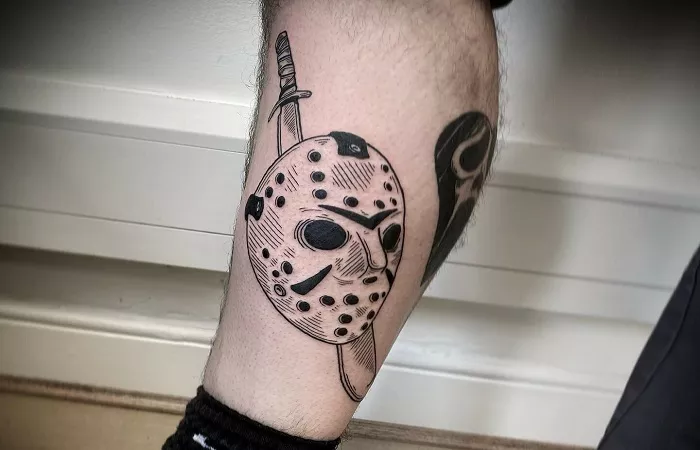Getting a tattoo designed is a significant decision that requires careful consideration and planning. A tattoo is a permanent addition to your body, so it’s essential to choose a design that you love and that represents your personality and style. In this article, we will explore in more detail how to get a tattoo designed, including finding inspiration, choosing a tattoo artist, communicating your ideas, finalizing the design, preparing for the tattoo, aftercare, and potential risks.
Finding Inspiration:
Finding inspiration is the first step in getting a tattoo designed. You can find inspiration from various sources, such as online resources, tattoo magazines, or by visiting a tattoo parlor and looking at the artist’s portfolio. Consider the meaning behind your tattoo and whether it represents your personality and style. Think about the size, placement, and color of your tattoo to ensure that it will look the way you want it to.
It’s also important to consider the placement of your tattoo. Think about how visible you want your tattoo to be and whether it will affect your future job prospects or personal relationships. Keep in mind that some parts of the body are more painful to tattoo than others, so consider your pain tolerance when choosing the placement of your tattoo.
Choosing a Tattoo Artist:
Choosing the right tattoo artist is crucial to ensuring that your tattoo turns out the way you want it to. Look for an artist who has experience in the style of tattoo you want and who has a portfolio of their work that you admire. You can also ask for recommendations from friends or family members who have tattoos.
It’s important to choose a tattoo artist who uses sterile equipment and follows proper safety procedures. Ask the artist about their sterilization process and if they use disposable needles and tubes. A reputable tattoo artist will be happy to answer your questions and will prioritize your safety and health.
Communicating Your Ideas:
When you have chosen a tattoo artist, it’s important to communicate your ideas clearly and effectively. Bring any reference materials you have collected, such as photos or sketches, to your consultation with the artist. Explain the meaning behind your tattoo and any specific details you want to include.
Be open to the artist’s suggestions and feedback. They may have ideas for how to improve your design or make it more visually appealing. Remember that the artist is a professional and has experience in creating tattoos that look great and last a lifetime.
Finalizing the Design:
After you have communicated your ideas to the artist, they will create a design for your tattoo. It’s important to review the design carefully and make any necessary changes before finalizing it. Consider the placement, size, and color of the tattoo to ensure that it meets your expectations.
Once you have finalized the design, the artist will create a stencil of the design and apply it to your skin. This allows you to see how the tattoo will look on your body and make any final adjustments before the tattooing process begins.
Preparing for the Tattoo:
Preparing for the tattoo is essential to ensure that the process goes smoothly and that you are comfortable throughout. Get a good night’s sleep and eat a healthy meal before your appointment. Avoid alcohol and drugs before the appointment, as they can affect your pain tolerance and make the process more difficult.
Wear comfortable clothing that allows easy access to the area where you will be getting tattooed. Avoid wearing tight or restrictive clothing that may rub against your tattoo and cause irritation.
Aftercare:
Aftercare is crucial to ensure that your tattoo heals properly and looks its best. Your tattoo artist will provide you with aftercare instructions, which may include washing the tattoo with mild soap and water, applying a healing ointment, and avoiding direct sunlight and swimming.
It’s important to avoid scratching or picking at your tattoo, as this can cause scarring and infection. Keep the tattoo clean and dry, and avoid wearing tight or restrictive clothing that may irritate the tattoo.
Potential Risks:
While getting a tattoo is generally safe, there are some potential risks that you should be aware of. These risks include infection, allergic reactions, and scarring. It’s important to follow proper aftercare procedures and to seek medical attention if you notice any signs of infection, such as redness, swelling, or discharge.
It’s also important to be aware of the potential for tattoo regret. While tattoos are a form of self-expression, your tastes and preferences may change over time. Consider the long-term implications of your tattoo and whether it will still be meaningful to you in the future.
Conclusion:
Getting a tattoo designed is a process that requires careful consideration and planning. Before you get a tattoo, it’s important to find inspiration for your design, choose a reputable tattoo artist, communicate your ideas effectively, and finalize the design. By taking these steps, you can ensure that your tattoo experience is safe, enjoyable, and meaningful. Remember that a tattoo is a permanent decision, so take your time to make the right choice for you. With proper aftercare, you can ensure that your tattoo looks great and lasts a lifetime.
Related topics:

